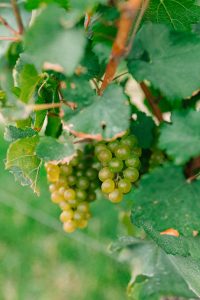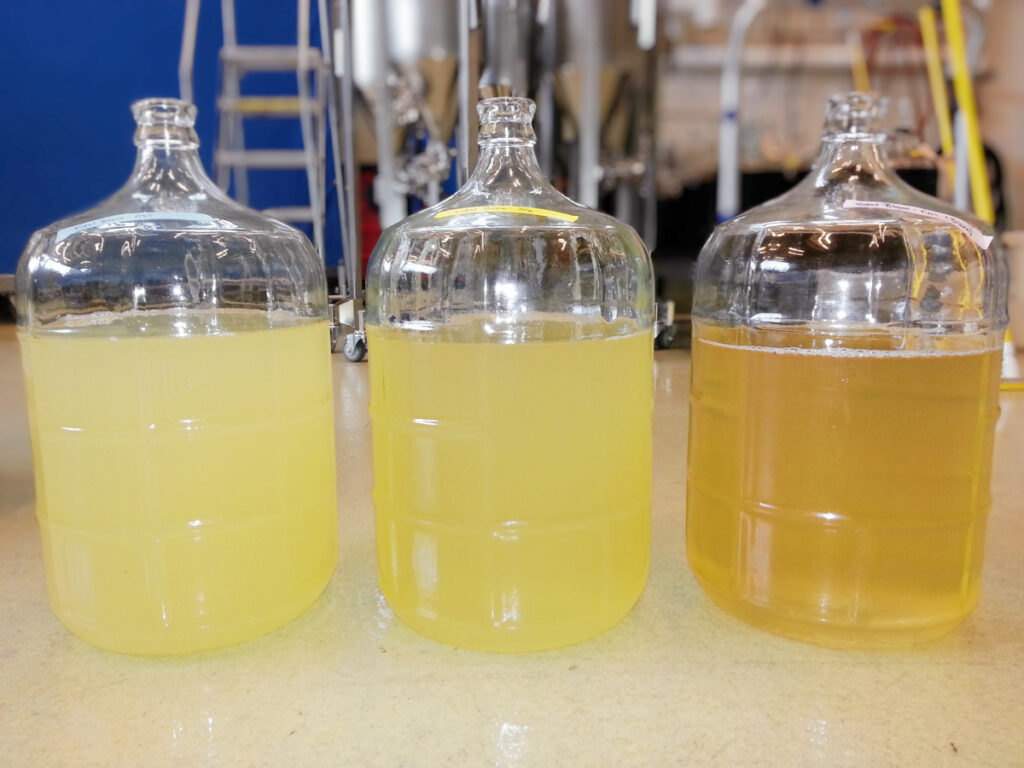Tips for Improving White Winemaking Processes

Photo by: Savannah Smith Photography
I can tell a lot about the quality of a winery’s wines by tasting three white wines on their tasting menu. Why? While there are some exceptions to this generalization, most white wines are straightforward in whether they taste “good” or “bad.” If a winery has issues selling their white wines, it is possible that there are issues in their winemaking practices and processes.
Generally, white wines should be refreshing, tasteful (whether neutral in flavor or aromatic), and, simply, appealing.
Discoloration, acid imbalances (too sour or too flabby), and off-flavors can quickly ruin the reputation of a brand’s white wines.
I wholeheartedly believe most winemaking regions can make stellar-quality white wines. It’s just a matter of understanding how various winemaking processes can affect the white wine’s quality in addition to understanding the varieties selected for fermentation.
So let’s review some key processing topics that wineries are encouraged to pay attention to this harvest season.
The Juice Quality Matters
I often remind DGW Clients that the juice phase (i.e., when white juices are sitting, pre-fermentation as juice lees settles) is the most vulnerable operation in the white winemaking process. Without proper care, the juice can easily spoil or quickly ferment uncontrollably.
Chilling the juice to about 40°F during juice lees settling inhibits spoilage, as the juice is genuinely unpreserved. Even if a winemaker adds some sulfur dioxide to the juice, it is usually not enough to inhibit much of the microorganism activity within the juice. While, yes, it can be difficult to adjust juice temperature quickly for inoculation, sitting unprotected at warmer temperatures (>45°F) poses a stronger risk for the juice to spoil and create pre-fermentation off-flavors or stressors for the fermentation process.
Adding too much sulfur dioxide pre-fermentation can cause additional issues. While its addition can contribute to the juice’s preservation, the over-use of sulfur dioxide can inhibit primary fermentation altogether. During fermentation, yeasts can absorb and utilize sulfur dioxide, developing hydrogen sulfide during primary fermentation. Remember that while hydrogen sulfide can get remediated with copper sulfate additions post-fermentation, this addition will have a “blanding effect” on the wine’s aroma and flavor. Such an effect eliminates the whole point of ripening grapes for winemaking purposes.
If your winery operation cannot minimize some of these vulnerabilities, especially with regards to temperature, consider more rapid settling techniques. Rapidase Clear Extreme from Scott Labs is my go-to pectinase enzyme to settle warmer juice. The temperature required for contact is based on the juice temperature. Note that a quicker settling time demands that the juice get inoculated sooner as well.
Green Juice vs. Brown Juice
Believe it or not, but the white wine’s style (how the wine generally smells and tastes) is often related to pre-fermentation processing techniques. This is often most reflected in the use of “green juice” versus “brown juice” decisions, which is related to whether or not a winemaker allows the juice to get oxidized prior to fermentation.
When sulfur dioxide is added to white grape juice, the browning enzyme, polyphenol oxidase or PPO, is inactivated. The inactivation of the PPO enzyme restores the yellow-to-green color of the juice. The act of adding sulfur dioxide to white juice prior to fermentation is often referred to as “green juice” fermentations.
In comparison, a small sulfur dioxide addition or the lack of adding sulfur dioxide, allows the PPO enzyme to work naturally, giving rise to a brown juice color. This process is often referred to as “brown juice” fermentations. These brown pigments that are created in the juice will fall out during primary fermentation, restoring the wine to a yellow color.
However, in addition to these noticeable visual changes, the act of adding sulfur dioxide to the juice will also influence the final wine sensory (smell and taste) for many white wine grape varieties. I previously covered these sensory changes in a past blog post titled, “The Sensory Effects of Green Juice vs. Brown Juice.”

Photo by: Denise M. Gardner
Do you know when it would be a good idea to switch between these two techniques? If not, join our DGW Elite Membership to talk about it during our monthly Q&A’s!
Sulfur-Containing Varietals
In the 1990s and early 2000s, New Zealand Sauvignon Blanc became incredibly popular. Not only were they benefitting off of critter-marketing techniques, but their Sauvignon Blanc was unique in style for the variety.
New Zealand wine processing techniques often exacerbate the naturally occurring sulfur-containing aroma compounds that are native to the Sauvignon Blanc variety. Since the popularity of this wine style, many of the winemaking techniques used to make these wines have been transferred around the winemaking world. But unlike the New Zealand industry, I find the application of these techniques are often utilized without context or understanding as to how these decisions may impact the wine’s quality and style.
There are some hybrid varieties out there (e.g., Vidal Blanc, potentially Vignoles, and Blanc du Bois) that, I think, can benefit from some of these winemaking techniques that may be more prone to protecting sulfur-based aroma compounds. For these varieties, I often encourage winemakers to attempt things like oxygen minimization, use of sulfur-aromatic encouraging-yeast strains, and “reductive” winemaking products/processes that are beneficial for retaining those sulfur-containing aromatics. In an essence, creating a more reductive winemaking environment encourages the generation of different aromas and flavors that can be wildly aromatic.
But… a winemaker has to use them strategically and within the limitations of their production space in mind. Consider our DGW Elite Membership to learn more about these techniques and whether they would be appropriate for your facility.
Eliminate Plastic in Production
If I could change one thing in the wine industry, it would be to minimize the use of plastic storage vessels and tanks from use in the cellar.
All plastics are oxidative, meaning they can allow for oxygen transfer into the wine. Yes, there are some strategic places where a winemaker can lean on the use of a plastic vessel for wine storage. But, again, this use is the exception and not the rule.

Photo by: Savannah Smith Photography
You should want to be within “the rule” if you are trying to make quality wines.
Stainless steel tanks are often better options for most white wines. In some wines, barrels or cement eggs may be appropriate storage vessels. But again, the storage vessel will influence the wine’s quality (both subjectively and objectively) as well as its style (how the wine generally smells and tastes). In the case of white wines, the styles are often broken into “neutral” white wines and “aromatic” white wines.
If you are in the habit of using plastic storage vessels for your white wine and need some suggestions for phasing these out, our community may be a good place to gain some guidance!
Over the years, I’ve learned that many common winemaking practices are utilized for financial ease and convenience. But with a focus on wine quality, some of these practices need evaluated. The 4 topic areas, above, are places where I see many, many wineries making easy mistakes and justifying those mistakes because “everyone else is doing it.” If you catch yourself thinking this, now may be the time to question why you are using these processes, techniques, or equipment, and how those decisions are influencing your wine’s quality!
The views and opinions expressed through dgwinemaking.com are intended for general informational purposes only. Denise Gardner Winemaking does not assume any responsibility or liability for those winery, cidery, or alcohol-producing operations that choose to use any of the information seen here or within dgwinemaking.com.
